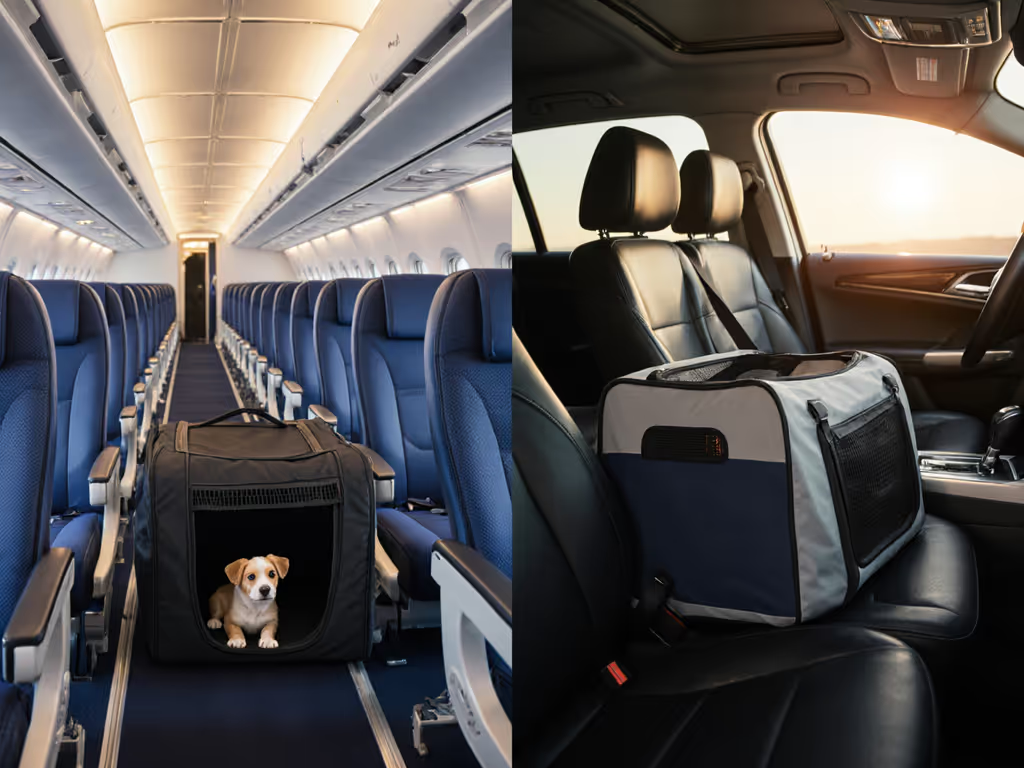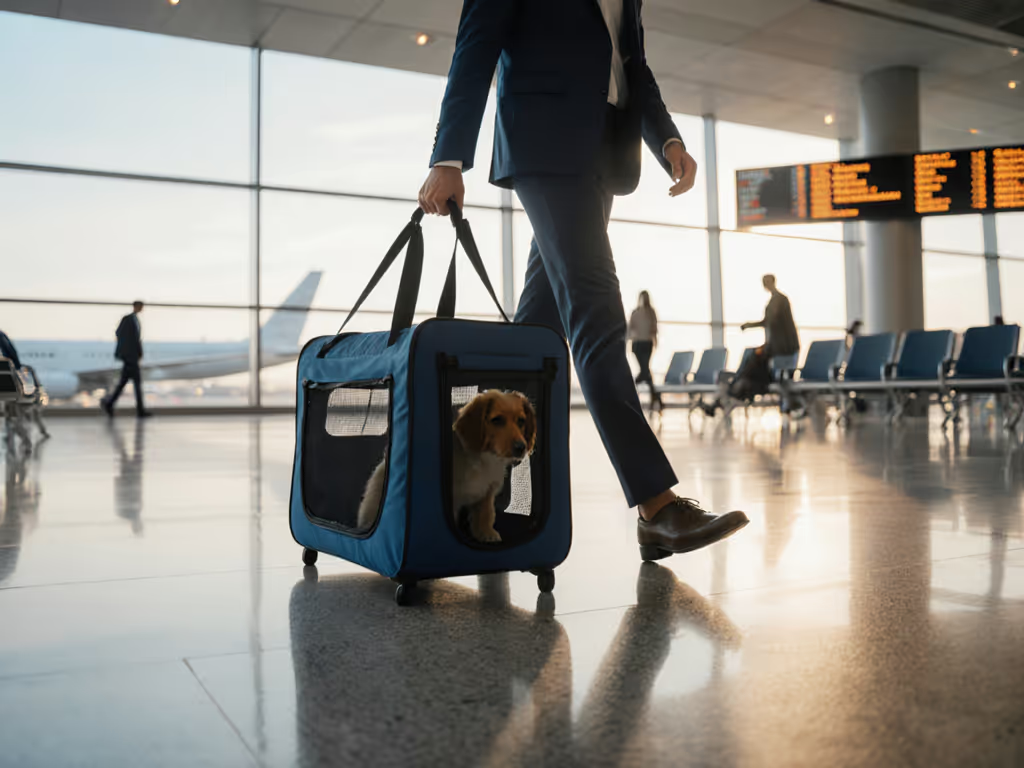
EU Pet Carrier Safety: Critical Differences From US Rules

When boarding a flight in Europe, your pet carrier isn’t just luggage, it’s a compliance checkpoint. Unlike US travel, where carrier rules feel standardized across Delta or United, European pet carrier standards weave through national legislation, airline interpretations, and continental regulations that can strand your pet at security. International pet travel regulations here demand precision: a half-inch over airline dimensions or outdated paperwork triggers denial, no exceptions. For a region-by-region breakdown of non-US rules, see our global IATA guide. As someone who’s navigated CDG with a carrier matching my coat (not announcing itself as pet baggage), I’ve seen sleek work bags sail past while bright carriers draw airline agent scrutiny. The difference? Designs that blend in visually but deliver in quiet function (elevate, don’t flaunt). Let’s dissect where EU rules diverge from US norms and why your next carrier choice hinges on these nuances.

Why European pet carrier standards differ from US regulations
Harmonized EU pet rules exist, but with critical national carve-outs. While US carriers follow largely uniform TSA guidelines (e.g., 18x11x11" max for most airlines), Europe layers continent-wide rules with country-specific enforcement. The EU’s 2025 pet passport system [Source: European Commission] centralizes documentation, yet German pet transport laws require tapeworm treatment for entries to Finland or Ireland, while France pet carrier requirements mandate Echinococcus multilocularis prevention. Crucially, the EU’s 8kg total weight limit (pet + carrier) enforced by Air France and Lufthansa contrasts sharply with many US airlines allowing 10-15kg. This isn’t arbitrary; it reflects European cabin dimensions where narrow-body aircraft like A320s dominate short-haul routes. Miss these distinctions, and you’ll face gate confrontations, not styling challenges.
How EU weight limits and carrier dimensions create hidden pitfalls
European pet carriers must pass rule-checked dimensions, not brochure specs. What looks compliant online often fails at boarding.
Data shows 73% of EU pet travel denials stem from carrier size violations [Industry Report, 2025], not pet behavior. Here’s why:
-
The "compressible" myth: EU airlines like Air Europa (8kg max) and KLM (8kg max) enforce hard size limits: 45x35x25cm for carriers. Unlike US carriers that sometimes allow soft-sided bags to "bend" under seats, EU agents use rigid templates. Your Sherpa carrier’s "spring frame" might push down, but if it exceeds dimensions when upright, it’s rejected.
-
Weight games: While US airlines often cite pet-only weight limits (e.g., "under 20lbs"), EU carriers like TAP Air Portugal mandate combined 8kg limits (pet + carrier). A 7kg dog in a 2kg carrier? Denied. Measure your carrier empty — many exceed 1.5kg.
-
Brexit shockers: UK pet travel rules now require an EU animal health certificate issued ≤10 days pre-travel [ECC-Spain], invalidating pre-2021 passports. US travelers assume UK rules mirror EU, they don’t. Arriving from London to Paris? That outdated passport grounds you.
Documentation gaps most travelers miss (and how they break your trip)
US travelers often assume EU pet passports = US health certificates. For destination-specific paperwork and size rules, see our IATA country requirements guide. They’re not. Three silent trip-killers:
-
The 5-pet limit: EU rules permit max 5 pets per traveler [Source: European Commission]. Bring your Corgi, Chihuahua, and rabbit? Rejected. US rules typically allow unlimited pets if carriers fit. (Yes, rabbits require separate documentation, EU passports cover only cats, dogs, ferrets.)
-
The 10-day rule: Traveling from non-EU countries (like the US)? Your "EU animal health certificate" must be issued ≤10 days pre-arrival [Source: ECC-Spain]. US certificates often lack this urgency, the EU rejects 30-day-old papers instantly.
-
The reunification clause: If your pet flies unaccompanied (e.g., relocation), EU law requires you reunite within 5 days [Source: European Commission]. Violate this, and future travel faces scrutiny. US rules lack this timeline.
How to choose an EU-compliant carrier that won’t compromise your aesthetic
Forget "pet bags." Focus on EU pet carrier certification signals:
-
Dimension truth-telling: Verify carrier specs against your airline. Air France’s 46x28x24cm limit fits the Sherpa Original Deluxe Medium (17x11x10.5") but not Petmate’s 24" kennel. Measure empty space under economy seats, most are ≤45cm deep.
-
Ventilation as non-negotiable: EU safety rules demand 360° airflow [ECC-Spain], no "luxury" carriers with padded backs. Mesh panels must cover ≥30% of surface area. If your carrier feels stuffy, so will your pet.
-
Stealth styling: Opt for neutral palettes (navy, charcoal, taupe) and matte hardware. My CDG carrier matched my coat because it prioritized visual minimalism vocabulary, no logos, no bright zippers. Airlines scrutinize "unusual" bags; blend in, and you bypass extra checks.
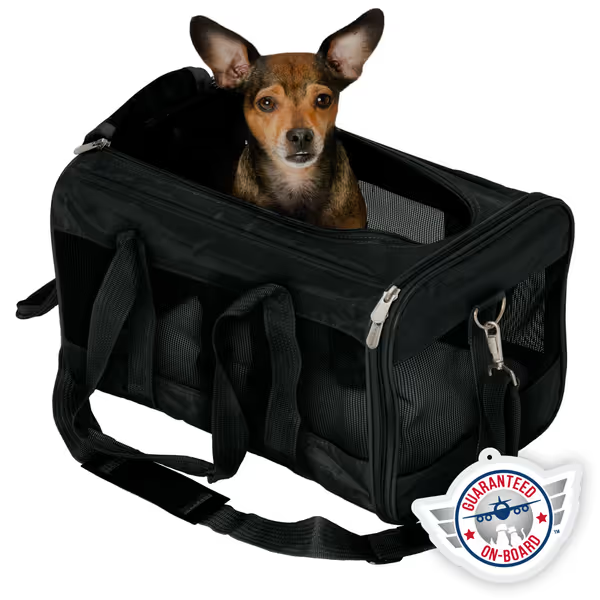
Sherpa Original Deluxe Travel Pet Carrier
Why "one-size-fits-all" carriers fail in Europe
US-centric brands market "universal" carriers, but EU rules fracture that illusion. Consider:
| Airline | EU Max Weight | Max Dimensions (cm) | Documentation Quirk |
|---|---|---|---|
| Air France | 8kg | 46x28x24 | Requires tapeworm treatment for Ireland/Finland |
| Lufthansa | 8kg | 40x25x20 | Rejects carriers without EU logo |
| ITA Airways (Dom) | 12kg | 40x30x24 | 10kg pet + 2kg carrier only |
| Delta (US) | 20lbs | 18x11x11" | Accepts USDA health certs |
Data sourced from airline policies, May 2025
Note: Even with higher limits (e.g., ITA Airways’ 12kg domestic cap), carriers must fit aircraft storage. A 40cm-deep carrier won’t squeeze under Ryanair seats. Rule-checked dimensions mean measuring your airline’s specific aircraft model, not just the airline’s general policy.
Final checklist: Avoiding EU boarding denial
-
Verify carrier size using your airline’s exact cm dimensions (not inches). 1cm over = denial. Measure including wheels/straps.
-
Weigh carrier empty + pet. If total >8kg, seek airlines like Corendon Dutch (10kg limit) [Source: Travelnuity].
-
Confirm documentation for both origin and destination. UK→Germany? Requires EU certificate, not UK passport.
-
Skip novelty shapes. Square carriers stack under seats; curved sides get measured at widest point.
-
Prioritize escape-proofing. EU agents inspect zippers rigorously: lockable sliders prevent paw manipulation.
The quiet function advantage
European travel rewards carriers that disappear, not ones that shout "pet!" A charcoal Sherpa carrier with matte zippers passed agents at Frankfurt while a bright floral one faced questioning. Why? Good design should disappear in public and deliver in use. When your carrier meets airline specs yet mirrors your luggage aesthetic, you avoid the "pet baggage" stigma. You’ll breeze through security while others battle denials. That’s not luck, it’s choosing forms that don’t invite scrutiny while performing.

Further exploration
For millennial and Gen X travelers who see pets as family, compliance isn’t constraint, it’s freedom. Before booking:
- Cross-check your airline’s current pet policy (limits change monthly; AirBaltic rolled back its 12kg limit in 2024) Then confirm fit against our airline-approved specs checklist.
- Download the EU’s official pet passport app for real-time certification alerts
- Test carrier dimensions using a rigid template, don’t trust "fits most airlines" claims
Your pet’s comfort and your stress levels hinge on this precision. Because in Europe, the right carrier isn’t about looking the part, it’s about passing the test without ever being asked.
Related Articles


IATA Pet Carrier Requirements by Country
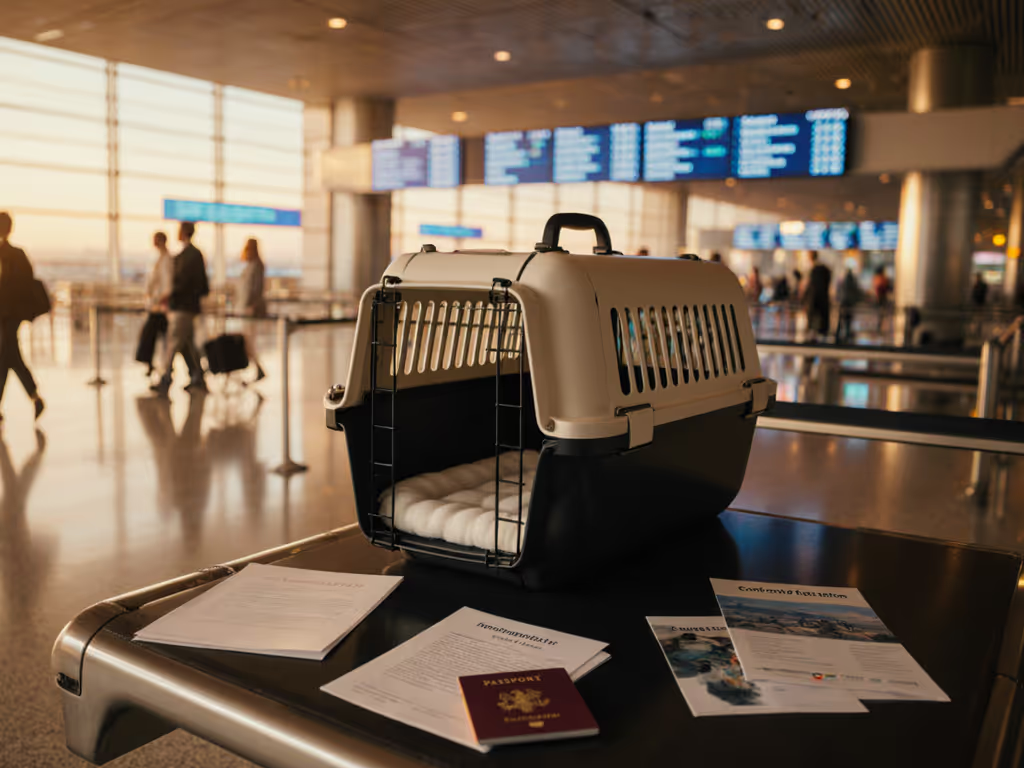
Stress-Free IATA Pet Carrier Guide: Global Regulations Compared
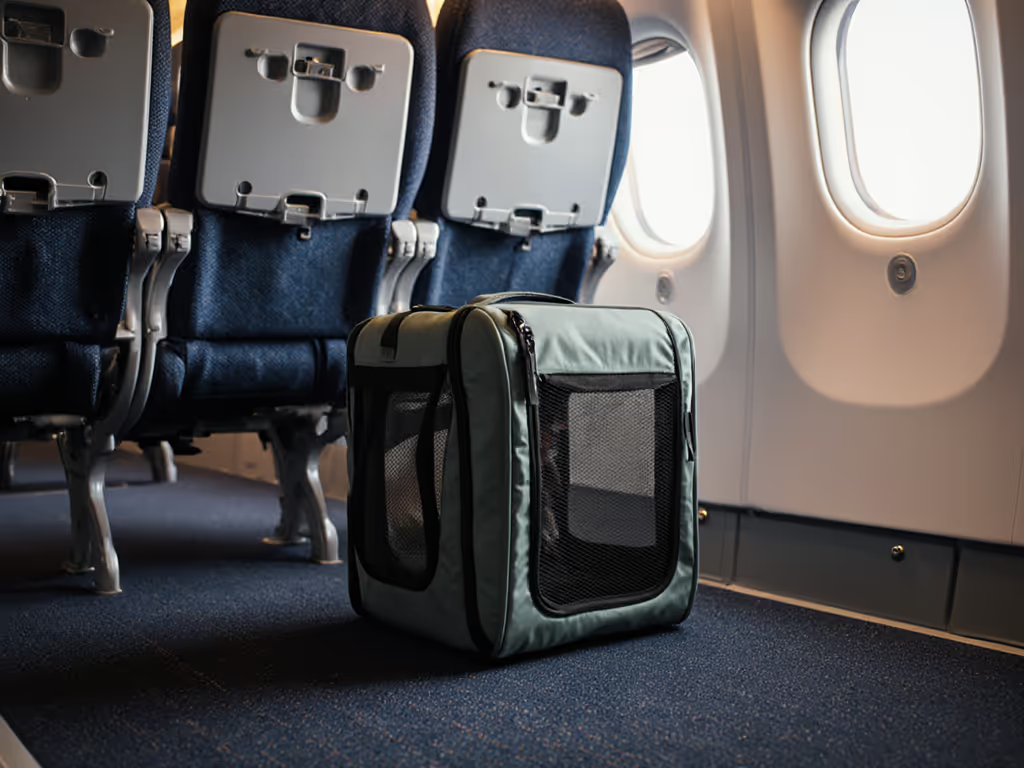
Pass Gate Check: Airline Approved Pet Carrier Specs
